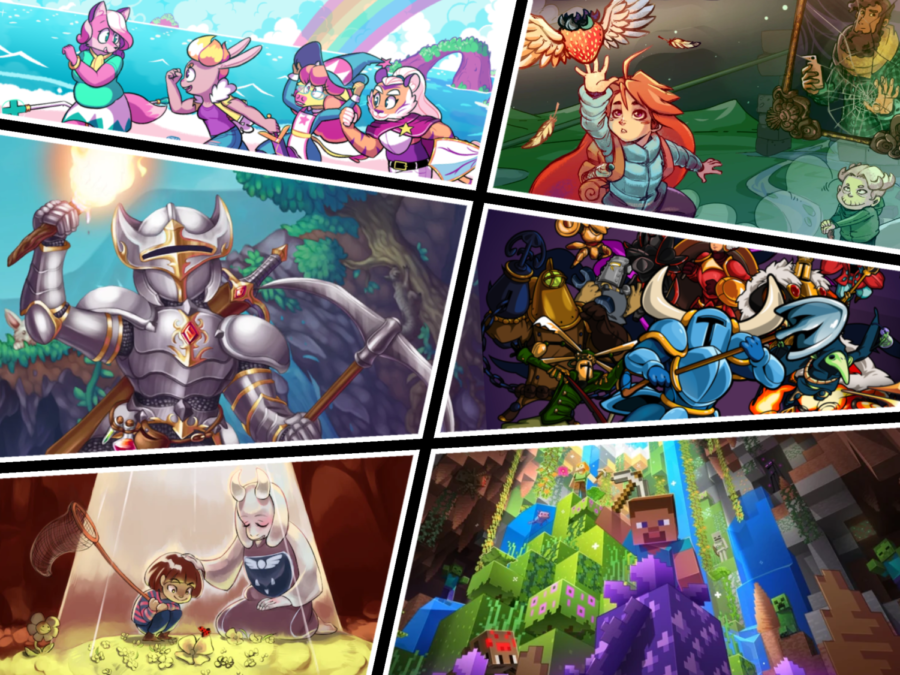Opinion: Indie games are the lead innovators of the gaming industry
Back in the 80s, 90s and even 2000s, video games were constantly innovating and building upon one another’s ideas, creating new gameplay and mechanics only possible as consoles grew more powerful with each generation. However, as the 2010s and 20s began, this innovation seemed to gradually disappear. No longer were most AAA game studios making innovative games with creative mechanics; they instead began focusing on storytelling and graphics. As a result, that innovation and creativity can be found within the indie games of today. Being made by a sole developer or small team, these games exceed the expectations of fans, shareholders and company officials. Indie games can be what they want, designed how they want and, as a result, bring colorful flavors to the current gaming landscape that AAA titles simply cannot achieve.
Contrast this uniqueness to the modern video game market and you’ll see overlap in genre, style and gameplay. In the 2010s, this was especially prominent with the shooter game genre, which resulted in a massive oversaturation of these types of games. On the contrary, upon observing an indie game’s landscape, you see a variety of diverse genres, styles and gameplay unique to itself, while also paying homage to its previous inspirations. Examples range from the high speed Sonic-inspired “Spark The Electric Jester,” to the Doom-like “ULTRAKILL;” these show how indie games hold themselves in high regard as being innovators.
Stories within this category of games are seen through a unique lens. Often, indie games are able to successfully depict and cover subjects that many corporate overlords may feel the need not to or find a unique method of storytelling.
The highly-acclaimed “Undertale” tells its story in a unique manner, using player data and all your previous choices in-game to tell its story. Indie games such as “Celeste” and “Super Lesbian Animal RPG” (yes, that’s the title), are love letters written to the LGBTQ+ community that corporate gaming companies cannot achieve. These topics and representation are rarely done by AAA titles, likely due to conservative higher-ups viewpoints and investors breathing down the necks of its developers to create a “clean” title.
Indie games have made themselves known in the gaming landscape. Some examples being the “Ori” duology becoming smash hits with their unique cinematic flair within the Metroidvania genre, “Celeste” being a speedrunner’s dream and gaming giants such as “Minecraft” and “Terraria,” who respectively had their humble beginnings as passion projects made by independent developers with a dream. Steve from “Minecraft” has even made his way into “Super Smash Bros. Ultimate” as a DLC fighter.
Indie games have become the lead innovators of the industry, while AAA titles settle on homogenizing and sticking with what has worked for decades. Both have their flaws, but I find that indie games offer more meaningful experiences that a major corporation simply cannot replicate. The array of genres and developing styles available to provide independent developers with the tools to create games is unlike anything that’s come before. These games made their mark on the gaming industry’s history, and it’s time major corporations start catching to their success.

Senior Alexander Cha is a reporter and this is his third year on staff. His favorite subject is English and his hobbies include writing stories and playing...



